German food is rich, hearty, and delicious and may top German dishes make great comfort food. Each region has its own specialty dishes and traditional cuisine. Made in Germany is a label that convinces people around the world. This applies to individuals who are holding the keys to the new Audi they just purchased, people who insist on listening to the entire 9th Symphony by Ludwig van Beethoven, but also to those who are hungry.
Traditional German food: what to try while in Germany!
Traditional German cuisine stands on three pillars - sausages, sauerkraut, and beer. Sausages and wieners are a subject of national pride; cabbage in German cuisine is the head for everything; the beer is so tasty that tourists from all over the world come to the Oktoberfest annual beer festival.
But, despite these well-established brands, German local cuisine is not limited to these products. It should be noted that each region of the country has its own culinary specialties and traditional foods that will delight gourmets with their diversity, consistency and excellent taste.
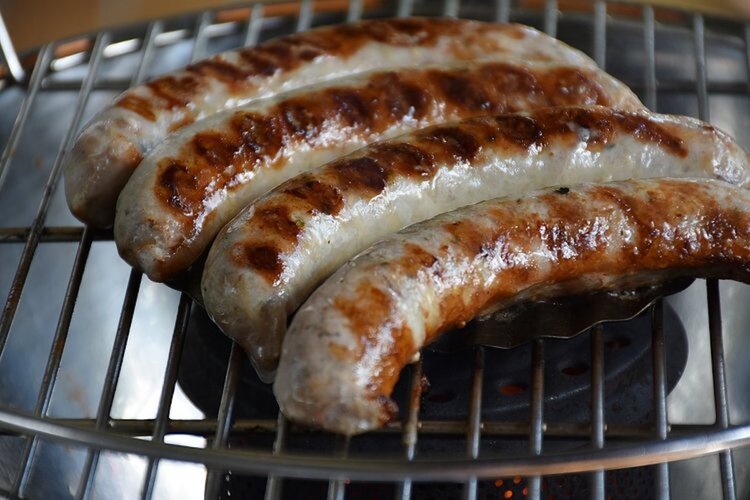 1- Bratwurst
1- Bratwurst
What is one of the first foods to try in Germany? Right, Bratwurst which is quite a traditional German dish.
The term Bratwurst is used to refer to a whole group of sausages, intended to be fried in a pan or on the grill. They are usually made from minced pork, in a natural casing.
Bratwurst is usually served with stewed sauerkraut, fried potatoes or potato salad. On the street stalls, Bratwurst is usually served with bread, mustard, ketchup or horseradish.
There is a large number of regional bratwurst recipes:
Weißwurst (Bacon Sausage) – is a white veal and pork sausage with the addition of pork back or lard. Boiled white sausage is the most common German food in Munich and should not be missed when in South Germany.
Currywurst (Spicy Sausage) – spicy minced pork sausages, they are so flavourful that you can smell them a mile away. Berliners are particularly fond of this German dish. There is even a museum in Berlin completely dedicated to Currywurst.

2. Schnitzel
Schnitzel is a very popular dish in Germany, which has many different cooking variations. One of the most popular ones is calf schnitzel (known as the "Vienna schnitzel") and pork schnitzel.
All schnitzels are thin boneless meat chops from the hip part of the corresponding animal.
Along with classic German recipe of a breaded schnitzel, there is also, for example, Hamburg schnitzel, which is served with fried eggs and onions. Spreewald Schnitzel is breaded, spread with horseradish, covered with slices of pickled cucumbers and then baked with cheese. Holstein Schnitzel is served with a fried egg on top.
Schnitzel can be served with a variety of side specialties including potatoes and sauerkraut.
And the great news is that all of these variations are considered to be authentic German food so you can choose whichever one you like!
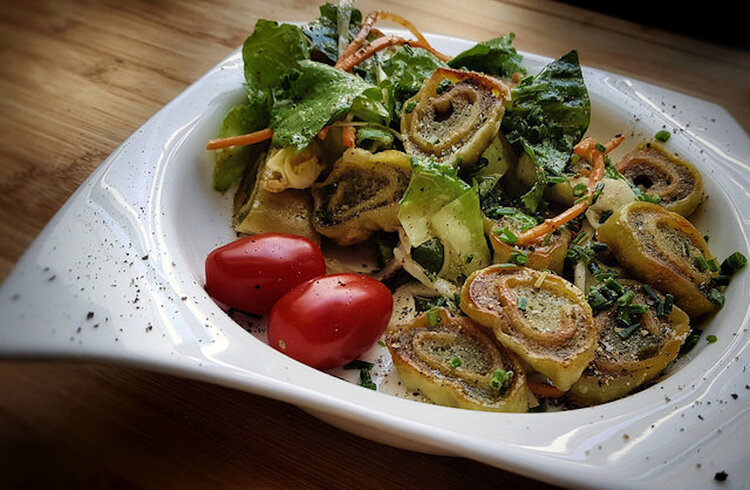
3. Maultaschen
Those who are looking to try unusual traditional German food should try the giant Maultaschen dumplings. They are stuffed with chopped meat, bacon, ham, spinach, nutmeg, marjoram, and parsley and are cooked in beef broth.
The origin of this German food is in South German Swabia where the Maultaschen is also called Herrgottsbescheißerle (“God's cheater”).
According to the German legend, the culinary invention belongs to the monks of the Maulbronn monastery. On Good Friday, when eating meat is forbidden, sneaky disciples have secretly changed the dumpling stuffing from greens to meat.
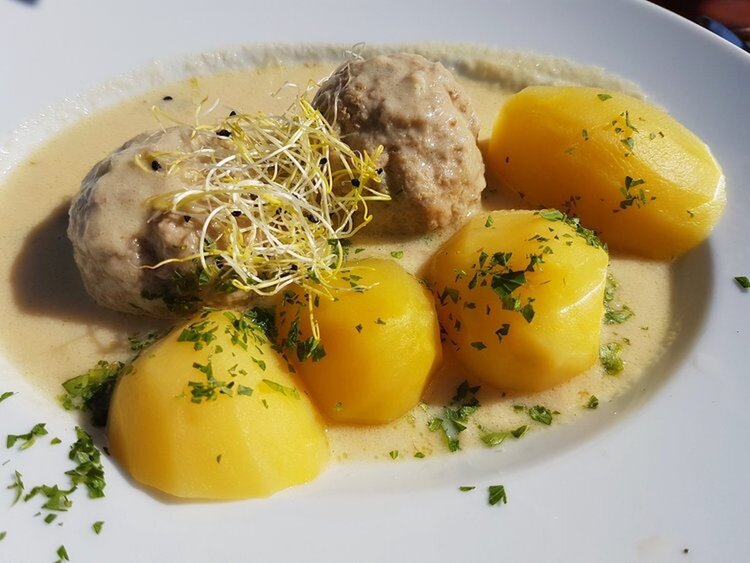
4. Königsberger Klopse
Experienced tourists believe that the famous meatballs from Prussia are the best food to try in eastern Germany, you will need that energy when enjoying spectacular views of Bavarian lakes! The recipe of Konigsberger Klopse appeared in the 19th century in Konigsberg (now Kaliningrad).
Semi-finished products of this popular German food, are packed in tin boxes and sold in supermarkets as well. But it is worth trying real Koenigsberger Klopse in the restaurants that serve traditional German food.

5. Falscher Hase
The most famous German foods include a simple casserole with a funny name. Falscher Hase (“Fake hare”) is minced pork, onion and potatoes stuffed with hard-boiled eggs.
The Falsche Hase recipe appeared in Germany after the end of World War II, during a food shortage. Roasted rabbits and hares used to be a traditional German dish for Sunday meals but they have almost disappeared after numerous bombardments.
Entrepreneurial housewives found a way out. They came up with a roll, the upper part of which resembles the back of an animal.

6. Rinderrouladen
This high-calorie meal is a frequent “guest” of traditional family Sunday dinners and can be rightfully called authentic German food. It is especially popular in Germany during the Christmas cold season.
The thin long layers of beef tenderloin are wrapped around bacon, mustard, onion, and pickled cucumber stuffing.
The specialty of Rinderrouladen is a spicy dark sauce made from broth, red wine, and vegetables that gives off an astounding aroma.
The combination of simple products creates a unique rich flavor of this traditional German dish which perfectly complements the side dish of stewed cabbage, boiled potatoes or flour dumplings.

7. Berliner Eisbein
Berliner Eisbein is loved by East Germans and is a go-to German food for true meat-eaters. The pork shank is first cooked in German beer and then baked generously flavored with garlic, onions, juniper berries, and spices. This traditional German dish is so big that it is enough for three people to share.
The word Eisbein is translated from German as "an ice foot". This traditional food has received this name because local people only eat it during winter frosts.
In addition, the delicious crisp on the shin shines as if it was covered with a layer of ice. In the restaurants of Berlin and other cities in Germany, Berliner Eisbein is served with stewed sauerkraut and pea puree.

8. Labskaus
Traditional German cuisine is very high-calorie. This is confirmed by the unsightly-looking, but delicious thick soup-pate.
The recipe for popular food has appeared in northern Germany. Sailors, swimming all around the Baltic Sea, used to prepare a hodgepodge of all the food that was on board of the ship. The basis of the famous soup was boiled corned beef, seasoned with onions, gherkins, pieces of herring, beets, and potatoes. And in modern days Labscaus became classic German food.
Today, Labscaus is a traditional German dish for many locals and the signature dish of the restaurants in Bremen, Bremerhaven, Hamburg, and Rostock. It is served with fried eggs and pickled cucumbers.

9. Eintopf
Eintopf has a very special place among the German soups. This thick dish is something between a soup and a stew. Fragrant, thick and very nourishing - this is how true Aintopf should be.
Translated from the German "Eintopf" means "one-pot". This name explains the way of cooking of this German meal: all ingredients are cooked in the same pot. There are many varieties of Eintopf. In fact, it can be prepared from anything you find in the kitchen: from beef or chicken, fish or wieners.
And you can add to the soup anything that a soul asks for: crackers, pasta, greens, peas, smoked meats, different vegetables, such as carrots, potatoes, cabbage. As you can see the simplest products are needed for this German food recipe and the result is excellent.
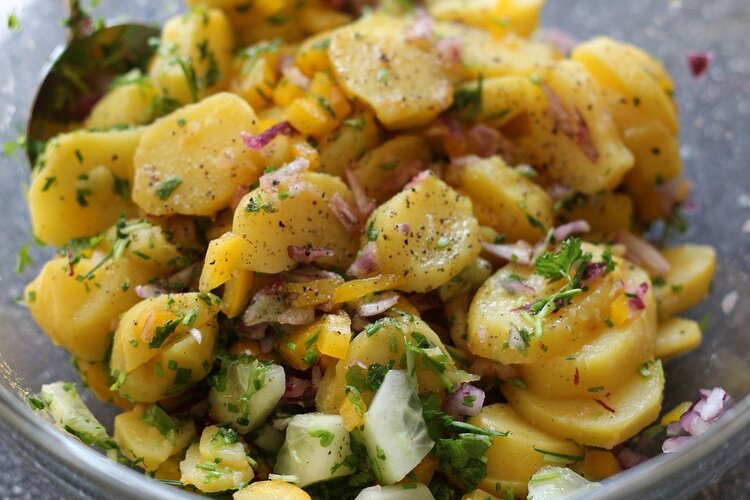
10. Kartoffelsalat
Potato salad is a popular European dish, especially in such countries as the Czech Republic, Austria and of course Germany. This salad can serve both as a side dish or a main dish as it is also tasty on its own.
There are probably 100 recipes of this salad and every person makes it differently which is great because you can cook it to your and your family’s liking. The recipe is simple and it does not require a lot of time for preparation.
In Germany, they prefer to use small-sized potatoes because they cook faster. Potatoes are always boiled in skin because it preserves more vitamins and then most recipes require further peeling of potatoes or sometimes leaving the skin for better nutritional value.
Classic Kartoffelsalat salad recipe doesn’t contain meat while other recipes can use sausages, fish or other meats. Dressing with mayonnaise, French mustard and onions marinated in lemon juice plays a significant role as well.

11. Sauerbraten
Sauerbraten is a traditional marinated meat roast that is cooked mainly in the cold season. Veal, pork, lamb, venison or even horse meat is marinated in a special sauce of wine or vinegar, as well as water with various seasonings, spices and herbs from three to ten days before cooking.
There are different ways of preparation in different regions: for example, closer to France, red wine is used as the basis for the marinade, and in Eastern Germany, not far from the Czech Republic and Poland, they prefer vinegar. In the Rhine region, they add beetroot syrup and raisins.
Sauerbraten is served with popular side dishes such as potato dumplings, boiled potatoes, red cabbage and Spätzle.

12. Käsespätzle
Believe it or not, but German food is not only about meat, take for example Käsespätzle – a traditional German meal coming from Allgäu and Swabia. Käsespätzle can easily be called a variation of the American mac and cheese, but instead of pasta, they use homemade noodles.
This meal is quite cheap and easy to prepare: use the same dough as for dumplings, wipe it through a sieve, boil it, and then bake it with cheese. As a result, you will get a kind of casserole with cheese flavor and threads of melting cheese – a real paradise for those who love cheese! The dish is served directly from the oven with some fried onions on top.
By the way, you can also try Käsespätzle in Salzburg region while hiking or skiing in the Alps.

13. Leberkäse
The name of this dish literally translates as “liver cheese”, although, it is something like meat loaf. Leberkäse is popular in southern Germany where it is prepared from salted beef, and sometimes with the addition of pork and onions. Then the mean is minced, baked in a pan till the brown crust appears, and served as a main dish with fried eggs and potato salad or as a cold appetizer with pickled cucumbers.
It is believed that Leberkäse was invented by a butcher somewhere around 1776 in Bavaria and now is considered a delicacy by travelers.

14. Schwarzwaelder Kirschtorte
There is no exploring German food without trying some of its finest sweets!
Sponge cake soaked in liqueur, whipped cream, cherries, and bitter chocolate. Schwarzwaelder Kirschtorte is the most famous and perhaps the most favorite dessert in Germany.
The first official mention of the multilayer cake dates back to 1915, when the confectioner from Bavaria, Josef Keller, decorated chocolate cakes, which were popular at that time, with cream and cherries. By 1930, the recipe for this classic German dessert became known throughout the country.
The name of the popular German delicacy comes from the combination of white, brown and red - the colors of the traditional costumes of Black Forest dwellers.
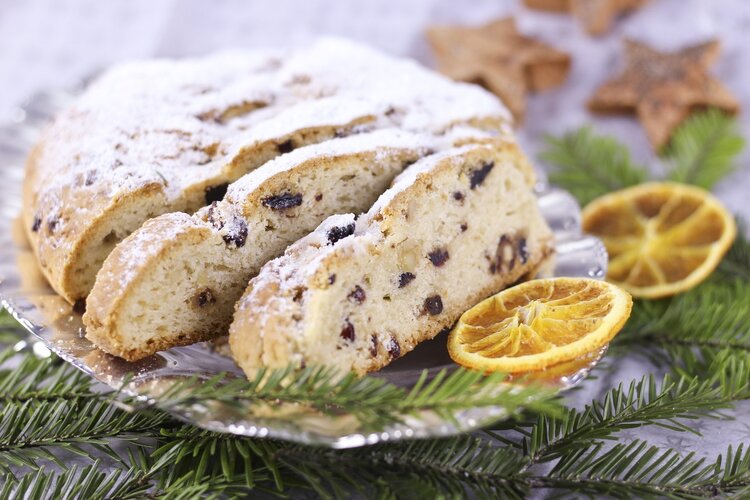
15. Dresdner Stollen
The history of Dresdner Stollen goes back to 1474 when in the Saxon Christian hospital of St. Bartholomew where people were offered to try Christmas bread made from flour, water and yeast. For centuries, Germans have perfected their favorite Christmas treat by adding new ingredients such as nuts, marzipan, raisins, dried fruits and spices.
For the Germans, Stollen became the traditional symbol of Christmas and you can be seen and try this treat at Xmas fairs and markets.
Today in Germany, sweet bread is prepared with various fillings but the most popular and traditional is the Dresden Stollen - this name is patented for the Christmas bread. Stollen used to be called “Striezel” and for this reason the Christmas market in Dresden is called Striezelmarkt - a market where they sell Striezel. The main feature of this sweet bread is that it acquires the best taste two weeks after baking.
Drinks in Germany: beer and lemonade brewed using the same technology
Isn’t it amazing to try traditional German food with some real local beer?!
German beer is definitely the most popular drink among locals and visitors. Germans drink it from neat glasses or heavy one-liter mugs, but most importantly, they savor every sip and enjoy the taste. It is impossible to list all the varieties; we will name only a few popular ones: Pilsner, Weissbier, Altbier (Düsseldorf Ale), Kölsch (Cologne beer), Schwarzbier, Dunkelbier, Rauchbier.
German wines also deserve attention as a part of German cuisine. Especially good are wines from the Moselle, the Palatinate, Rheinhessen.
Pro Tip: When choosing a wine, pay attention to its classification. Quality wines are labeled Qualitätswein bestimmter Anbaugebiete (QbA) or Prädikatswein.
Eiswein – “ice wine” occupies a special place in the classification. This dessert wine is made from grapes frozen on the vine.
For sweet cakes and pastries, you can order Schwarztee (black tea) or one of the herbal teas (Kamillentee – chamomile tea, Pfefferminztee – mint tea). In the morning, the Germans themselves prefer to drink coffee.
Apfelschorle – a highlight of German cuisine, half apple juice mixed with half mineral water.
Also, you might want to try the “Bionade” carbonated drink that won the Germans' love. It’s a kind of lemonade with five different flavors. Interestingly, Bionad is prepared using the same brewing technologies as for beer.
Where to try traditional German food?
In Germany, you don’t have to look for specific restaurants that serve traditional German food. Both in touristy places and local neighborhoods there are many restaurants and pubs that serve authentic German food. The difference is only in prices.
By the way, it’s normal if you take your kids to order food in a pub. You can count on a good lunch at Gaststätte and Biergarten. However, Kneipe and Bierhaus specialize more in beer snacks.
-
Good news for the early birds: German cafes open at 7-8 in the morning, offering a traditional breakfast - eggs, sandwiches, coffee. Restaurants begin to work later, but offer a hearty lunch. In the evening, restaurants are open until 22-23 pm.
-
You can enjoy various types of sausages on the go. In street stalls, you will get a plate of weisswurst with sweet mustard, bratwurst in a bun or currywurst with spicy sauce. A popular serving for snacks on the go is Drei im Weggla, i.e. three sausages in a bun. Just as well you can buy pretzels at kiosks: despite the brackish taste.
-
And also in Germany, there is fish fast food called Nordsee, which offers fish and seafood dishes.
Our review will be incomplete if we don’t mention that in some federal states of Germany there is a tradition to come to the restaurant on Sundays with the whole family. Some Germans even wear national costumes.



